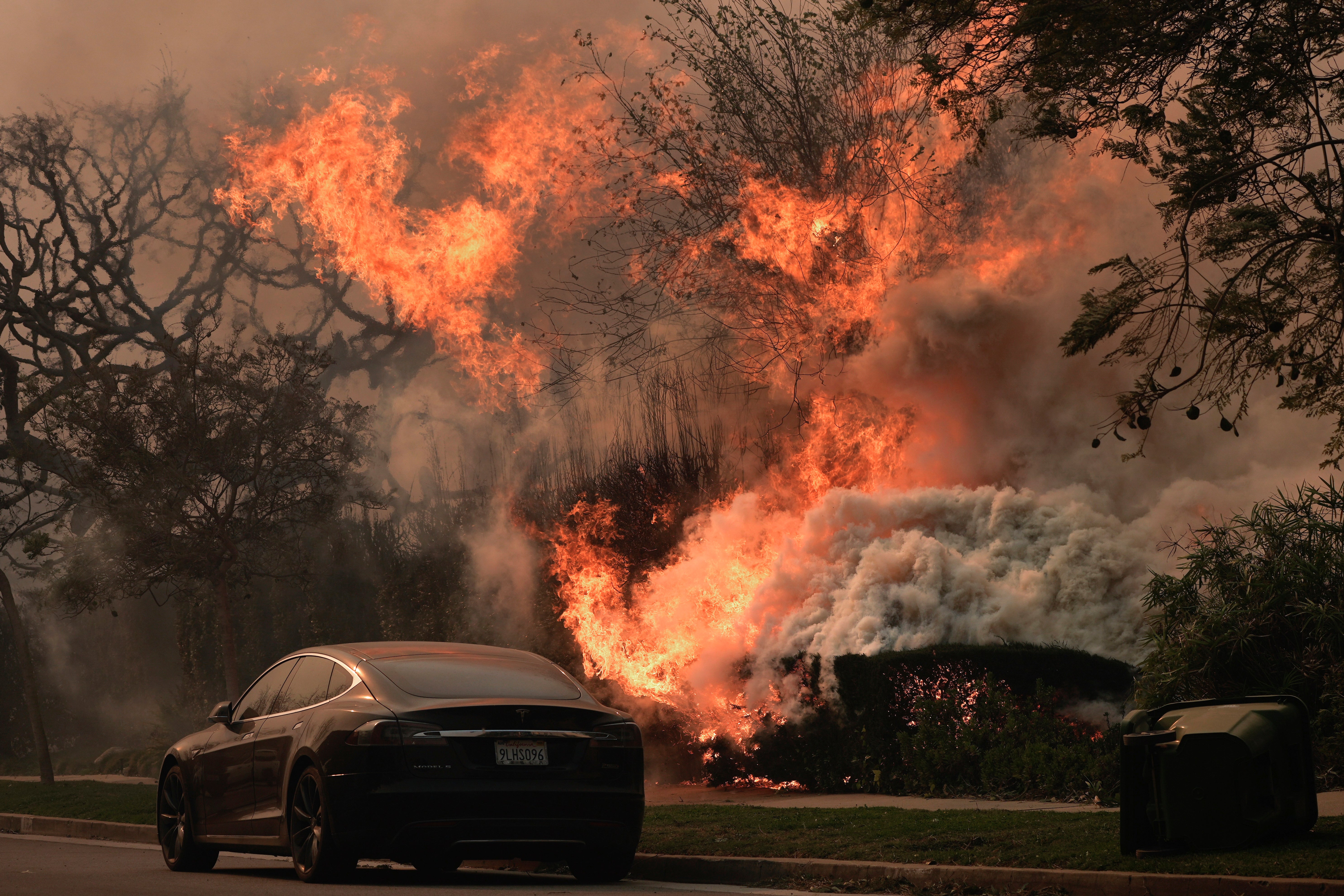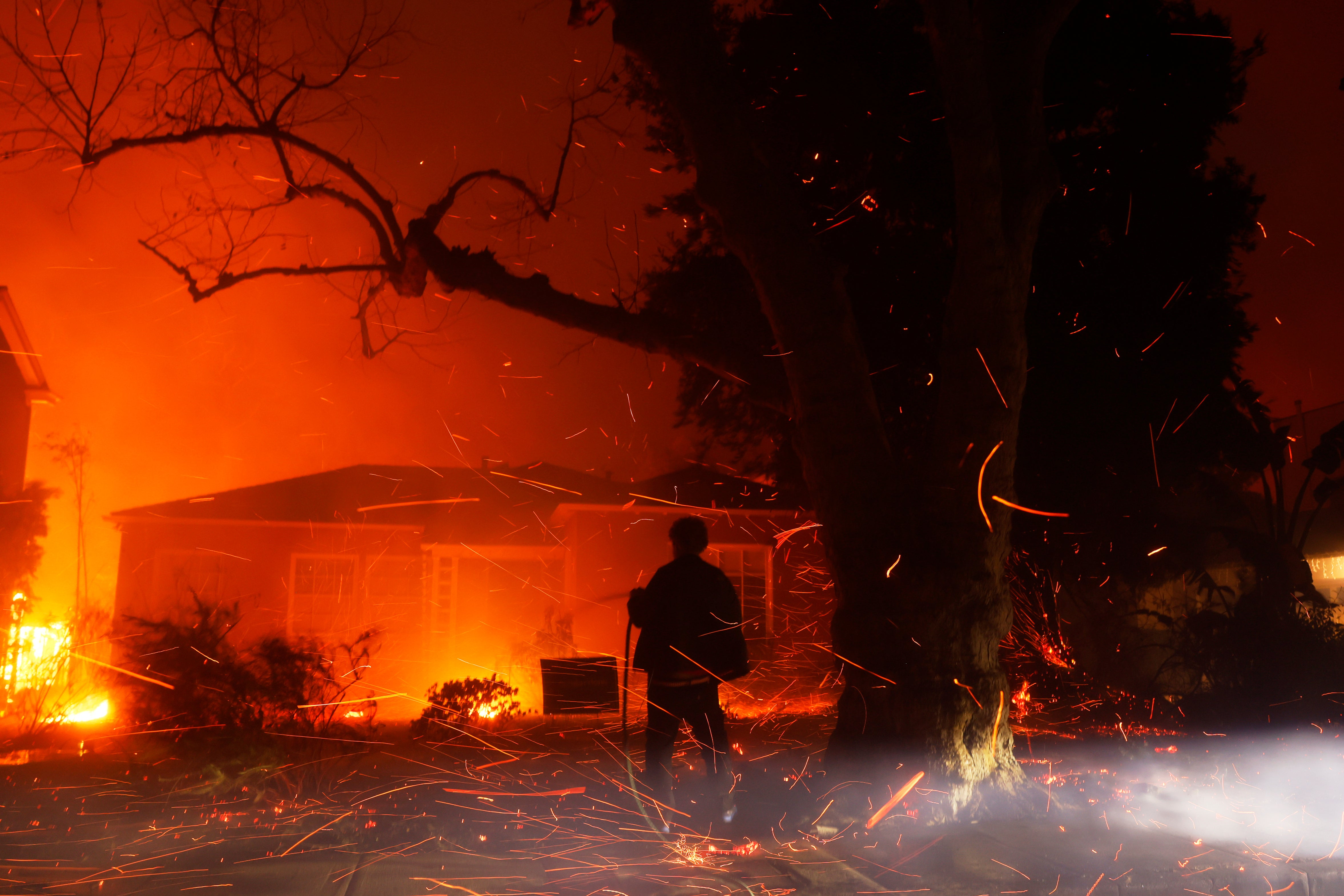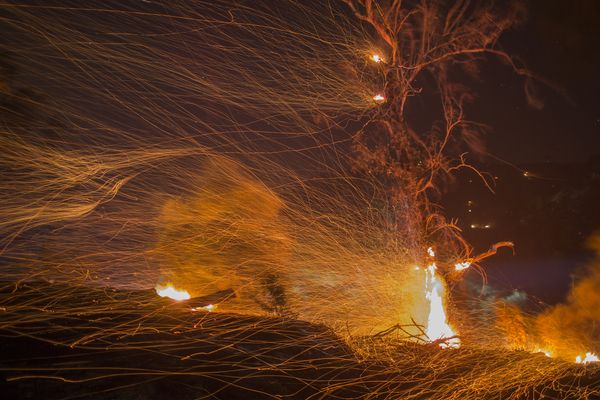As fires continue to devastate Los Angeles, critics argue that in addition to preparing for vulnerabilities in the city’s patchwork hydrant system, officials could have done more to prevent the blazes by clearing built-up brush and vegetation around the most vulnerable areas.
“The brush clearance alone, had that happened, would have just changed the trajectory of this fire,” real estate magnate Rick Caruso, a former Los Angeles mayoral candidate, told ABC 7.
Elon Musk, meanwhile, claimed that “crazy environmental regulations prevent building fire breaks and clearing brush near houses” were the “biggest factor” behind the fire.
These arguments are largely incorrect, according to fire experts.
Both county and state rules already require individuals to maintain vegetation-free buffer zones around homes in high-risk areas.
Even these regulations, however, would not have stopped this round of fires, which spread quickly as Santa Ana winds with gusts of over 80 mph blew the blaze horizontally between houses and carried embers through the sky, touching off new blazes.
“All of the brush clearance, fuel breaks — they’re very effective on what we would consider a normal day,” Chief Brian Fennessy of the Orange County Fire Authority toldThe Los Angeles Times. “But what you’re talking about here is probably less than 1% of all the fires that we respond to in Southern California.”

“You could have put a 10-lane freeway in front of that fire and it would not have slowed it one bit,” he added.
Making matters worse, hard-hit neighborhoods like Altadena and the Pacific Palisades are built in high-risk fire zones. In addition, 90 percent of Los Angeles County’s housing stock was constructed before 1990, prior to fire-proofing code requirements taking effect.
“The houses are perfectly aligned with the direction of the prevailing Santa Ana winds,” wildfire mapping expert Zeke Lunder toldThe Washington Post. “It is too late after the city is built to think about this stuff.”
An analysis from the newspaper found that as of Saturday, more than 70 percent of the burned areas in L.A. County were in zones the state determined have very high fire risk.
Thus, when fast-moving winds began carrying the blaze towards these communities, the stage was set for catastrophic destruction.
“The bottom line is the winds far outweigh the fuel in terms of fire spread in a situation like this,” Jon Keeley, fire ecologist with the U.S. Geological Survey, told LAist. “When you have these winds it makes fuels less relevant. And the fuels are definitely not relevant once it gets into the urban environment, because the primary fuels are the homes.”

Moreover, clearing out brush is more effective in the ecosystems of Northern California and the Sierra Nevada mountains, where decades of total fire suppression allowed fuels to build up, ignoring both the landscape’s natural fire cycle and the long indigenous history of controlled burns.
In these areas, controlled burns and reduction in brush can make forests both more resilient and less combustible, but these impacts are less meaningful in the dry, scrubby climate of Southern Calfornia, one of the most extreme fire climates in the world, according to the National Park Service.
In these chaparral ecosystems, controlled burns could hasten the replacement of slow-gestating native plants with faster-growing invasives which die sooner and increase fire risk.
“Prescribed burning is not effective in limiting the spread of wildfires under the conditions that burn the largest amount of land and cause the most home losses,” according to the NPS.
“Native shrublands are being burned too frequently because of human-ignited wildfires,” it added. “Prescribed fire does not fulfill any identified ecological need in chaparral or coastal sage scrub and would increase the probability of a damaging short fire interval following a prescribed burn.”
Still, experts point to some clearance and defense methods that could’ve been increased ahead of the fires.
In a December memo, Los Angeles Fire Department Chief Kristin Crowley warned that a $7 million budget reduction for the department’s overtime hours constrained the ability to carry out inspections on whether homeowners were following brush clearance rules.
And local leaders have long warned that individuals sometimes resist buffer rules, not wanting to tear out the gardens, fences, and plants that define the landscaping in the high-end areas where some of the fires did their worst damage.










